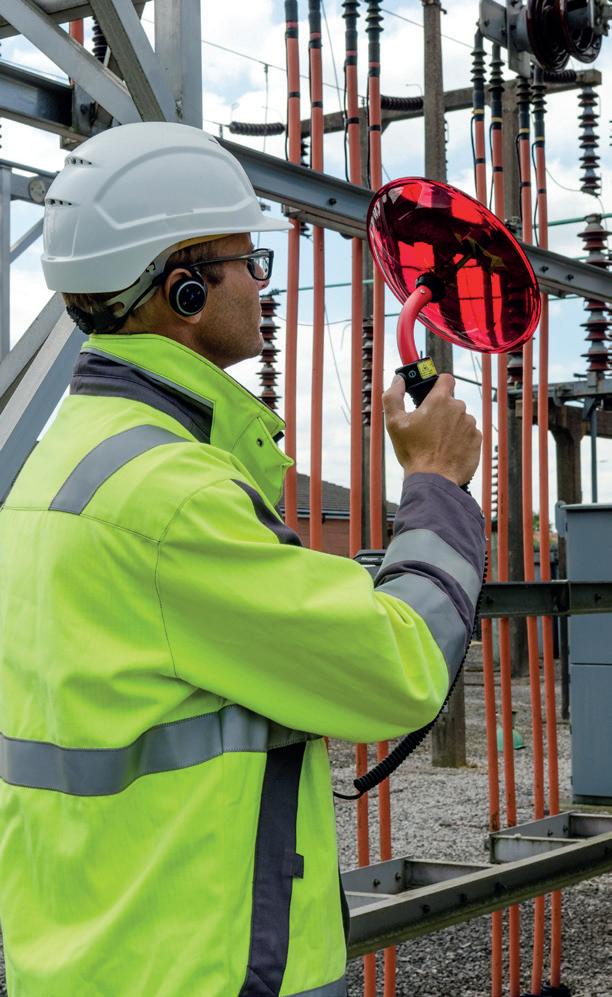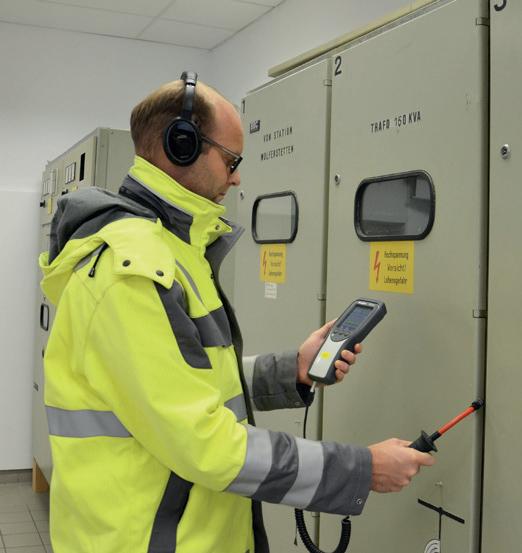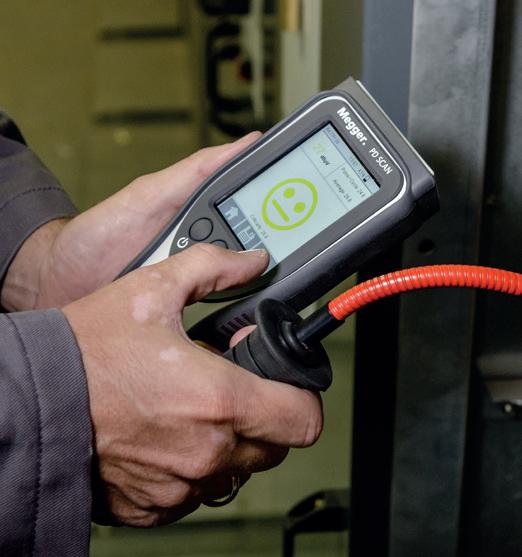
10 minute read
Gossage Gossip
Spendthrifts at Ofgem
There I was, foolishly thinking that expenditure on installing a couple of display panels in a meeting room would be a matter simply for petty cash. Well, it might be for you and I, but not for those grand people at the nation’s energy regulatory body, Ofgem. In September, the regulators had some graphic display panels installed at their plush offices in London’s Canary Wharf. These panels cost the Ofgem purchaser, one Alfie Ellis, some £22,740. And which local East End installers actually undertook the work? Er, none. The installation was undertaken by a firm based in High Wycombe, in leafy Buckinghamshire. So, not local at all. That company’s name is withheld, apparently ‘for commercial reasons’. But we are permitted to know they have over 500 employees, so not a small outfit either. One thing we can all recognise – these installers can easily spot a very over-generous purchaser over one hundred miles away.
Advertisement
Ladies who lunch
Ever wondered how come the big energy companies managed to persuade Liz ‘no handouts’ Truss into a complete U-turn? A U-turn which just happened to provide them with precisely the residential bills subsidy scheme they were seeking? Look no further than the two ladies who recently joined the main boards of Scottish Power and Centrica.
Their names are Claire Perry and Amber Rudd. What do these ladies have in common? The answer is that both left Parliament at the last election, having been in succession the Conservative minister in charge of energy policy. And both remain most definitely very close members of the sorority around Liz Truss.
Grammar lessons for Jacob
Much has been written about the appropriateness of appointing Jacob ReesMogg as the Cabinet Minister in charge of energy policy. Because of the rotundity of the language he deploys, he has frequently been described as “just visiting from the eighteenth century.” Long immaculately dressed in clothes of his great grandfather’s time, he has always been meticulous in the precision with which he uses erudite English words, avoiding colloquial slang on all occasions.
So, what are we to make of his contribution to a press release issued by Number 10 concerning the decision to make future taxpayers pay large chunks of your and my home fuel bill this winter. In it, Mr ReesMogg is quoted accusing Russian President Putin of ‘weaponising’ the supply of energy. Weaponising? Weaponising? In no dictionary of the English language can this improbably vulgar new ‘noun-into-verb’ word be found. What could have happened to Mr ReesMogg? Is he changing his famous precise use of vocabulary overnight, to celebrate running energy policy? Or are No 10 simply putting the new-fangled words that Liz Truss might choose to deploy into her colleague’s mouth? If so, what sort of dangerous precedent is this new Prime Minister setting?
Bombing out with hydrogen
It is currently Government policy that, within a couple of years, no new buildings will have gas boilers installed. And that by 2035 all gas boilers will be illegal. Even though Liz Truss is anxious to encourage as much gas extraction as possible from the North Sea, and is studiously ignoring the specific commitment in the Conservative manifesto at the 2019 election that “we will not support fracking.” Even so, the threat of elimination within the next decade or so is causing some consternation amongst companies that make these gas boilers – of which well over two million are currently sold each year. What to do? Simple. Just pretend your boiler is not fuelled by natural gas. Recently I was at a trade show at the National Exhibition Centre near Birmingham, where two of the largest British manufacturers, Worcester Bosch and Vaillant, were marketing 100% hydrogen boilers. In Worcester Bosch’s case, the label, inevitably coloured green, described the same ‘hydrogen ready’ boiler as being ‘zero carbon’.
But were you to install such a ‘zero carbon’ boiler today, you would find that it would still mostly run on natural gas – even if hydrogen was available. If and when green hydrogen was to be injected into existing gas grids on any large scale, ‘blended boilers’ would still only run on 20% hydrogen. Leaving them reliant on natural gas to provide 80% of the power to heat buildings.
Cameron was anti-nuclear
Those who, like the new Prime Minister, bemoan the failure of past Labour governments to promote masses of new nuclear power stations, may care to consider these prophetic words from her Conservative predecessor, David Cameron, uttered just before the Conservatives regained power in 2010: “Where the [Brown] Government sees nuclear power as the first choice, under our framework it would become a last resort. We need to think in an entirely new way about energy. The future of energy is not top-down, it’s not centralised – it’s bottom-up and decentralised.”

Work safer on medium voltage systems
When you work on medium voltage switchgear, your first and overriding priority will always be to maximise safety. But what can you do to protect yourself against hidden hazards that are not readily apparent? Sandy Woodley of Megger looks into this issue and offers some useful suggestions.

f you’re professionally involved with MV switchgear, you’ll I know that there are many ways in which it can fail. You’ll also know that the most common failure is insulation breakdown, and that the results can be catastrophic. Even a modest fault in an MV installation releases enough energy to wreck equipment and, if the circumstances are truly unfortunate, to kill. Which means that when you’re working with or even near MV equipment, you want to be as sure as you possibly can that such a fault is not likely to occur.
Unfortunately, equipment that’s about to fail rarely gives you an advance warning. Or does it? In fact, insulation breakdowns are very often preceded by partial discharge (PD) events. If you can detect and monitor these events, you will, therefore, have a strong indication of equipment and cables that may soon fail. You can then investigate further and, if necessary, take the equipment out of service before a really serious problem develops.
At the very least, you’ll know that it’s a good idea to keep your distance from the suspect equipment if you want to stay safe. That’s reason enough for owners and operators of MV systems to insist that PD checks are always carried out on their equipment before any work takes place on or near it.
That’s all very well, but how do you carry out these surveys? Equipment to detect PD is nothing new but, for the most part, it has been designed not only to detect PD but also to investigate and characterise it. That’s excellent in its place, but the consequence of all this functionality is that the equipment requires skill to operate and to correctly interpret the results. Also, if you invest in this equipment, it will undoubtedly serve you well in demanding applications, but if you only intend to use it for MV switchgear surveys, you’ll be paying for a lot of features you’ll never use.
What you really need is a compact instrument – ideally handheld – that is very easy to use and that provides clear, unambiguous go/no-go results. You’ll need an instrument that works in a live environment, so that you don’t need to take equipment out of service to carry out your surveys. You won’t, however, need sophisticated functionality – you can always bring in other equipment when you want to investigate potential problems in more detail – but you will need versatility, so that you can deploy the widest possible range of PD detection techniques. A PD detector can offer the versatility you need by employing multiple sensors – both internal and external – so let’s take a look at some of the possibilities.
You will find an internal acoustic sensor – essentially a microphone that listens for the characteristic noise produced by partial discharges – is a good choice for PD testing on air-insulated MV switchgear and equipment that’s in direct line of sight. If you need more flexibility in where you can place the sensor, you can achieve this by using an external acoustic sensor that connects to the detector via a cable.
For fully enclosed switchgear, you’ll want a contact probe that is sensitive to vibrations produced by partial discharge, while for switchgear where the components are not visually accessible – mostly vacuum and GIS equipment – an internal TEV (transient earth voltage) sensor will pick up RF radiation from the PD via the switchgear’s metallic enclosure. An external TEV sensor performs a similar function but will also help you to localise the PD source.
If you have a PD detector that allows you to connect an HFCT (high-frequency current transformer) sensor, this will usefully extend its functionality to include simple on-line PD surveying of MV cables. Finally, a parabolic acoustic sensor will let you carry out outdoor surveys to detect, for example, corona and surface discharge in terminations, CTs, PTs and isolators.
Let’s remember now that if you’re going to be routinely carrying out quick pre-work safety surveys, your PD detector must be fast and easy to use, so what should you need to do to configure it appropriately for the type of sensor in use? The answer is nothing! The detector should automatically set itself up for the type of internal sensor you select, or for the type of external sensor you plug in. This not only saves you time and trouble, but also makes it near impossible for you to make mistakes that might produce misleading results.
And what about those results? You may have heard – or even know from your own experience – that PD results can sometimes require skill and experience to interpret. But you don’t need that level of detail for a safety survey. So how about an instrument that provides you with “traffic light” results? Green for all is OK, amber for caution – consider investigating further, and red for danger – further investigation definitely needed.
Of course, as you gain experience, you may well want to be able to alter the thresholds for amber and red indications to suit your own specific requirements, and you’ll almost definitely want a little more detail in the results so you can record and trend them. A phase-pattern PD display option will also be useful, as it provides a very useful way to distinguish between true partial discharge effects and random noise.
Hopefully by now you’re convinced of the benefits of routinely carrying out PD surveys on MV equipment, especially before you start work on or near it, and so you’ll be interested to know that a PD survey instrument that meets all of the requirements we’ve discussed has recently been introduced to the market. This is the new PD Scan from Megger.
In fact, this innovative device does rather more. It includes, for example, a camera that allows photographs to be easily attached to test reports, and which can also be used to read QR codes to identify equipment and documentation. It has a humidity and temperature sensor so that you can easily add these key parameters to your data, and there’s provision for you to download your results easily into a PC and quickly generate comprehensive reports.
For all of its versatility and functionality, this instrument is as simple to use as a smartphone. It has just three buttons, and a large colour touchscreen that is intuitive in use and shows only those options you need to deal with the current operation, rather than forcing you to plough through a rat’s nest of complicated menus.
Every one of us in the electrical sector is constantly aware of the need for safe working, which is why many safety precautions are “baked” into our routines: locking out circuits under test, for example, and grounding equipment that’s being worked on. Now the easy-to-use equipment discussed in this article provides us with the opportunity to adopt another safety routine: that of carrying out PD surveys before working on MV equipment. The process is fast, easy and non-disruptive; the results can save not just money, but lives.









